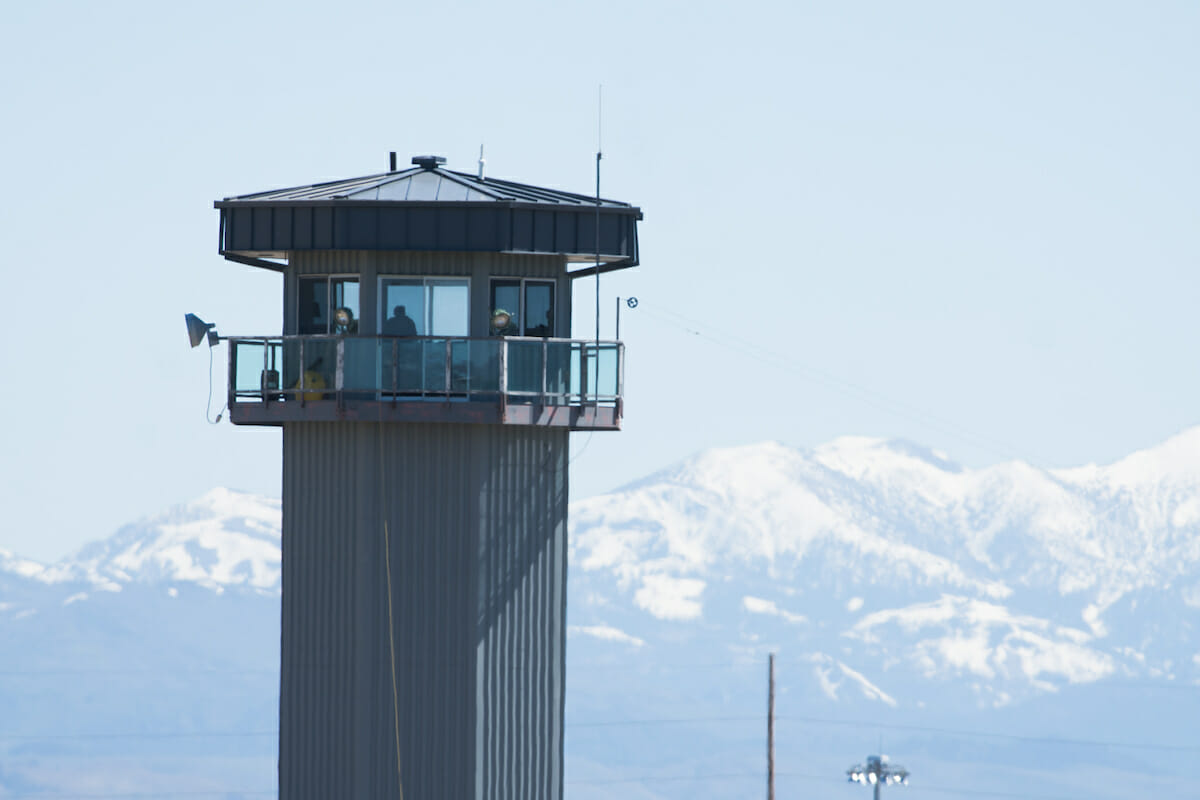Nevada prison population declines but still well above "emergency capacity"

Officials at the Nevada Department of Corrections say the prison population has declined by more than 300 inmates since mid-2017 as the agency focuses more on rehabilitating inmates and after the Legislature approved a range of criminal justice reform bills.
Statistics on the agency’s website show there were 13,768 “in-house” inmates in prison at the end of June, and 13,427 at the end of November, the most recent data set available. That’s a decline of 341 people.
The total population at the end of November was 13,936, down from 14,117 at the end of June. That’s a drop of 181.
Prisons Director James Dzurenda told lawmakers last week that there are a few reasons for the decline. He pointed to a reduction in felony arrests, replacing “non evidence-based” programs and activities in the system with ones shown empirically to reduce recidivism, and parole workers embedded in the prisons to ensure inmates move more efficiently onto parole when their sentence is up.
Dzurenda summarized the situation as fewer inmates in the front door and more out the back door.
The decline, coupled with the state’s decision to send 200 inmates to a private prison in Arizona at the end of 2017, has eased overcrowding enough for the agency to shuffle inmates around and get a head start on clearing — and then remodeling — a decrepit housing unit at Southern Desert Correctional Center. The project is getting started some 90 days ahead of schedule.
Dzurenda’s announcement at an Interim Finance Committee meeting drew criticism from Democratic Assemblyman Mike Sprinkle, who said the Legislature’s priority was to avoid private prison use overall instead of speeding up capital improvement projects. Prisons officials say they need to clear up at least enough room to host re-entry programming, which had previously been crowded out when inmates were sleeping in multipurpose rooms.
In spite of the positive news, the prisons remain more than 1,000 inmates above “emergency capacity” and many are still housed in overflow situations, officials said. Emergency capacity is the term used when every other cell in the system is double-bunked.
The agency has also been under fire for racking up correctional officer overtime, even as officer high vacancy rates have stabilized. As of last month, the department was $15 million over its budget for the current fiscal year that will end in mid-2018 — a situation Gov. Brian Sandoval called a financial emergency.
In each of the past three years, overtime costs for the prisons department have grown 30 percent, according to a state audit released in January. The prison population itself has grown by an average of just 2 percent in that time period.
Some of the overtime can be explained by the need for supervision while an increasing number of inmates receive medical care outside the prison — hospital supervision drove 18 percent of overtime expenses last year. But officials also suggested there might be some malfeasance in scheduling.
“It would be naive to think the system is not being gamed. I am positive that there is collusion going on in order to generate schedules that would result in ‘feathering one’s nest,’ as you say,” said John Borrowman, prisons deputy director of support services, at an audit committee meeting last month. “But at what point in time do we implement a policy that is harmful to the collective in order to address those who are gaming the system? How do you isolate those? How do you identify those?”
Representatives from the AFSCME union (the American Federation of State, City and Municipal Employees) pushed back against that characterization, blaming the situation on “poor management and inadequate staffing that has created the need for overtime.”
“In order to meet the governor’s budget, the NDOC intentionally has underestimated the number of correctional officers necessary to efficiently operate the facilities,” AFSCME President Harry Schiffman wrote in an opinion piece published in The Nevada Independent.
Dzurenda acknowledged the department realized the overtime problem about six months ago but was slow to act. He said he’s been receiving weekly reports on overtime usage and is requiring more justification for the expenditures.
“We do understand that we own this,” he said.
Corrections executives said they’re implementing a new scheduling software that will whittle down the possible reasons for taking overtime, making it easier to track usage and spot trends. They’re also reducing the number of officers per hospitalized inmate; it had been two per inmate and is now one per lower-security inmate, with a roving officer assigned to small groups at the hospital.
“We have a very good strategic plan in place right now. I’m going to see a significant reduction in what we need for the rest of the fiscal year,” Dzurenda said. “We’re changing our plans drastically. We’re definitely in a better situation today than we were a month and a half ago.”
Sandoval's office says it's taking a hands-on approach to reining in the agency's expenses.
"The governor's office has assembled and embedded in the Department of Corrections a team of finance experts led by the governor's senior advisor and former budget director, Andrew Clinger," said spokeswoman Mari St. Martin. "This team has worked with the Department to come up with a corrective action plan to substantially reduce the budget deficit. The plan is not final but will include several cost saving measures and a strategy to reduce overtime costs."
